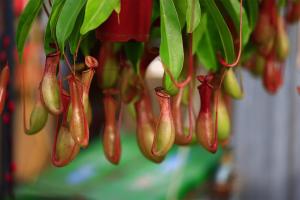Preparation
Before planting garlic, it's important to choose the right time and location. Garlic should be planted in the fall, between September and November, in a location that receives full sun and has well-drained soil. You'll also need to purchase garlic cloves to plant. Be sure to choose high-quality cloves from a reputable source.
Planting
Plant garlic cloves about 2 inches deep and 4-6 inches apart, with the pointy side facing up. It's best to plant cloves in rows, with about 12 inches of space between each row. After planting, water the cloves well, and make sure the soil stays moist but not waterlogged. If possible, add a layer of mulch to help conserve moisture and regulate soil temperature.
Care
Once your garlic has sprouted, it's important to continue caring for it properly. Keep the soil moist, but don't overwater, as this can lead to rot. Fertilize the garlic about once a month with a balanced fertilizer. Also, remove any weeds and keep the garlic bed tidy to prevent pests from taking up residence.
Harvesting
Garlic is typically ready to harvest in early summer, when the leaves begin to yellow and die back. Carefully dig up the garlic bulbs using a fork or spade, being careful not to damage them. Allow the bulbs to dry in a cool, dry place for about a week. Once they're dry, cut off the tops and roots and store the garlic in a cool, dry place.
Using Garlic
Garlic is a popular ingredient in many recipes and has numerous health benefits. Use fresh garlic in recipes by mincing or crushing the cloves. It can also be roasted or used to make garlic-infused oil. Garlic is also a natural insect repellent, so consider planting it near other plants to help keep pests away.
Conclusion
Planting and growing garlic is a simple process that can provide flavorful and nutritious bulbs for cooking and other uses. With proper preparation, planting, and care, you'll be enjoying the benefits of fresh garlic in no time.

 how many times do yo...
how many times do yo... how many planted tre...
how many planted tre... how many pine trees ...
how many pine trees ... how many pecan trees...
how many pecan trees... how many plants comp...
how many plants comp... how many plants can ...
how many plants can ... how many plants and ...
how many plants and ... how many pepper plan...
how many pepper plan...































